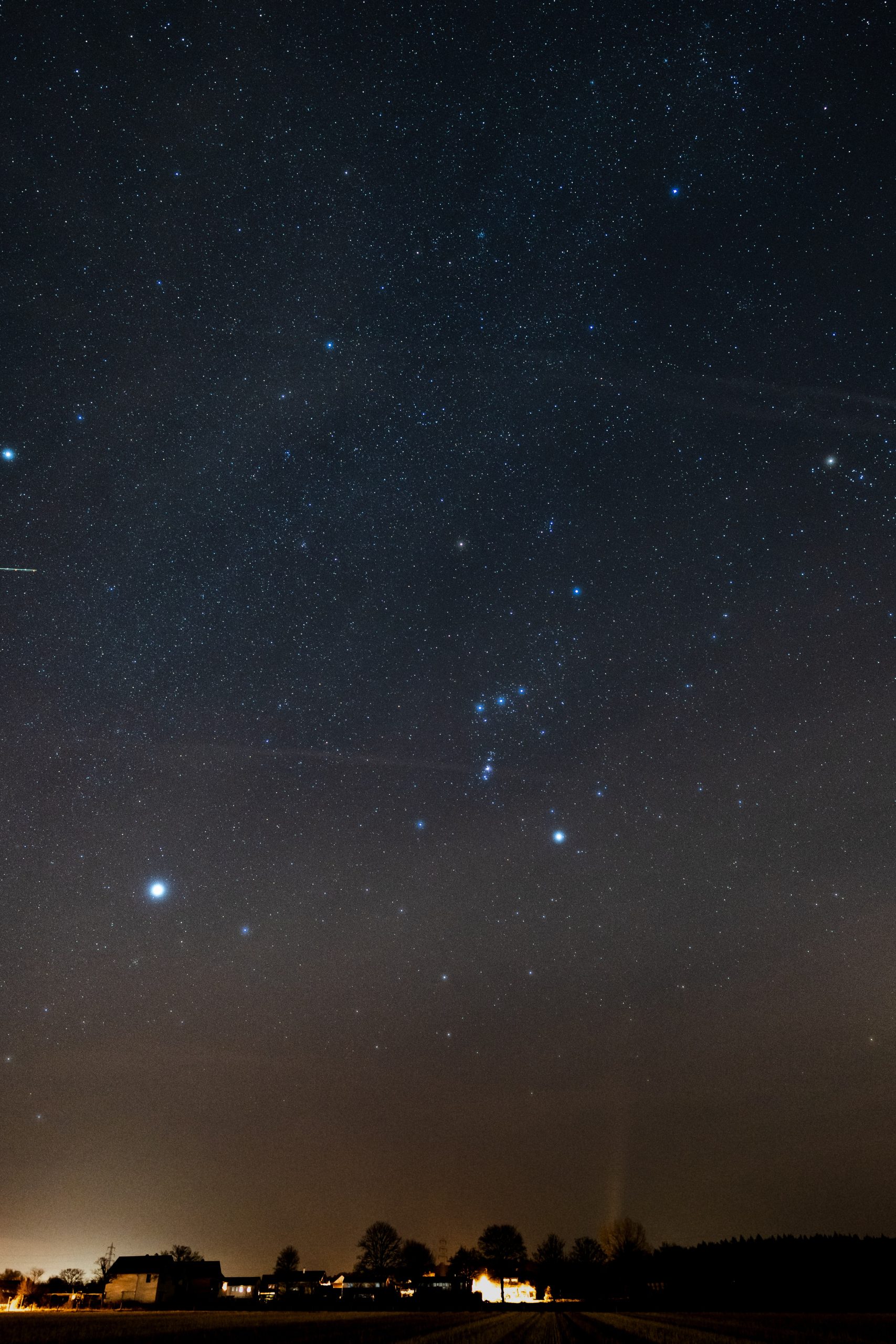Exploring the Four Phases of the Moon
The moon has always captivated humanity with its mystical allure and mesmerizing beauty. Throughout history, various civilizations have assigned different meanings and importance to the moon. From ancient folklore to modern scientific understanding, the lunar cycle and its phases have intrigued and inspired countless generations.
In this comprehensive guide, we will delve into the intricacies of the four phases of the moon. We will explore the scientific explanations, cultural significance, and the visual spectacle each phase presents. Join us on this voyage through time and space as we discover the wonders of our closest celestial neighbor.
1. New Moon
The lunar cycle begins in darkness with the new moon phase. During this time, the moon is positioned directly between the Earth and the Sun, with its illuminated side completely facing away from our planet. As a result, the new moon is virtually invisible to the naked eye, enveloped by the vastness of space.
Despite its seemingly unremarkable appearance, the new moon holds great significance across various cultures and religious traditions. In astrology, the new moon symbolizes new beginnings, growth, and the unfolding of possibilities. Many rituals and celebrations are often tied to this phase, marking the start of a fresh chapter and the setting of new intentions.
Furthermore, the new moon also plays a crucial role in the natural world. Its gravitational influence, coupled with that of the Sun, leads to higher tides, known as spring tides. These tides impact marine ecosystems and influence the behavior of various marine species.
2. Waxing Crescent
As days pass after the new moon, a slender crescent begins to emerge on the right side of the moon. This phase is known as the waxing crescent. Its name stems from the word “wax,” implying the gradual increase in illumination.
The waxing crescent phase marks the early stages of lunar visibility, offering a delicate sliver of light against the night sky. Observing this phase can be a fascinating sight, as it symbolizes transition and growth. The waning darkness gives way to hope and anticipation, embodying the idea of new possibilities on the horizon.
Despite its beauty, the waxing crescent is relatively short-lived, lasting only a few days. Nonetheless, it serves as a precursor to the subsequent phases, building anticipation for the moon’s complete illumination.
Characteristics of Waxing Crescent Phase: |
|---|
|
3. First Quarter
In the midst of the lunar cycle, we encounter the enchanting first quarter phase. This phase occurs when approximately half of the moon is illuminated, resembling a perfect semicircle in the sky. Positioned at a ninety-degree angle to the Sun and Earth, the first quarter phase allows us to witness the intricate patterns and rugged landscapes of Earth’s celestial companion.
Contrary to its name, the first quarter phase does not signal that the moon is one-quarter of the way through its cycle. Instead, it refers to the moon being one-quarter illuminated. The first quarter phase is also colloquially known as the “half moon” and typically occurs around a week after the new moon.
During this phase, the first quarter moon is visible high in the sky around sunset, providing a breathtaking spectacle. With its contrasting light and dark regions, known as mare and highland, this phase showcases the moon’s geological features. These regions result from ancient volcanic eruptions and impact craters that have weathered the ravages of time.
First Quarter Moon Facts: |
|---|
|
4. Waxing Gibbous and Full Moon
As we approach the latter stages of the lunar cycle, the moon transitions into the waxing gibbous phase. During this phase, more than half of the moon is visible, with only a small sliver left unilluminated. The waxing gibbous phase represents a continuation of growth and anticipation, gradually building towards the grand finale of the full moon.
The waxing gibbous moon unveils its mesmerizing beauty during the night, commanding attention with its radiant glow and awe-inspiring majesty. As the moon approaches full illumination, its surface features become more pronounced, inviting observers to explore its craters, mountains, and valleys.
Finally, after approximately two weeks since the new moon, we reach the pinnacle of the lunar cycle— the full moon. At this stage, the entire face of the moon is illuminated, casting a radiant glow on Earth below. The full moon is a symbol of completion, abundance, and heightened gravitational forces.
Waxing Gibbous and Full Moon Phase Facts: |
|---|
|
The full moon phase has long captivated human imagination and cultural belief systems. It has been associated with various legends, myths, and religious ceremonies across civilizations. Additionally, the gravitational pull of the full moon exerts an influence on terrestrial bodies, affecting tidal patterns and potentially impacting human behavior.
Conclusion
The four phases of the moon—new moon, waxing crescent, first quarter, and waxing gibbous/full moon—are like chapters of a cosmic story, each offering unique beauty and significance. From the darkness of the new moon to the radiant illumination of the full moon, the lunar cycle provides a captivating display of celestial movement.
As we journey through the lunar phases, let us embrace the wonders of the moon. It is a celestial companion that connects us to the vastness of the universe and the rich tapestry of human history. Whether for scientific exploration, cultural appreciation, or personal inspiration, the four phases of the moon will forever symbolize the cyclical nature of life, and our constant connection to something much greater than ourselves.
Table of Contents
